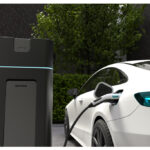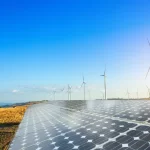Why Long Duration Energy Storage Must Scale 50x by 2050
As the world transitions toward a clean energy future, the role of long duration energy storage (LDES) is becoming increasingly critical. With rising investments in renewable energy storage, the need for scalable and efficient grid storage solutions has never been more urgent. According to leading energy forecasts, achieving net-zero emissions by 2050 requires an exponential expansion of energy storage systems—scaling 50 times the current capacity. This growth is necessary to integrate renewable sources, ensure grid stability, and address energy storage challenges that hinder a fully decarbonized energy landscape.
The journey to net-zero emissions is complex, requiring a strategic blend of solar, wind, and other renewable sources, all of which depend on efficient grid storage. Without a robust expansion of energy storage systems, the intermittency of renewables will limit their potential, causing supply-demand mismatches that could derail the clean energy transition. Research indicates LDES solutions may be required to scale to 1 terawatt (TW) by 2030 and 8 TW by 2040 to enable the achievement of energy priorities globally, further outlining the need to make increases in scale around storage technologies.
In this blog post, we will explore why long duration energy storage must scale 50x by 2050, the existing energy storage challenges, and the innovative renewable energy storage solutions that can pave the way for a sustainable future.

The Need for Massive Scaling in Long Duration Energy Storage
The energy industry around the world is undergoing an unrivaled transformation and the wind and solar power currently contribute a considerable portion to the production of electricity. These are nonetheless intermittent sources in themselves, however, solar and wind sources cannot create electricity at night or in bad weather respectively. The grid cannot be run on pure renewables until the issue of long term storage has been solved.
Current Energy Storage Landscape
Currently, the majority of grid storage options are based on lithium-ion batteries that are beneficial in the short term energy application, but they are far from enough to offer energy storage capabilities over long periods. Pumped hydro storage, the most common form of renewable energy storage, has geographical limitations and cannot be deployed at the scale required for a net-zero grid. The requirement for the need to fill this dead storage underlines the fact that energy storage systems that can discharge power over many hours or even days, i.e. long duration energy storage, would be desirable.
Scaling LDES to Meet Future Demand
In order to achieve net-zero emissions by targets, the world’s capacity for LDES is estimated to need to be 1 TW by 2030 and 8 TW by 2040. This is a staggering figure compared to installed storage capacity levels today. Scaling energy storage systems by such proportions is crucial to:
- Encourage growing shares of renewable energy in the power portfolio
- Enhance energy reliability and prevent blackouts
- Decrease reliance on fossil-fuel-operated backup systems
- Provide stable electricity prices by effectively controlling supply fluctuations
Reaching this scale needs innovations in renewable energy storage technologies, new policies, and massive investments from public and private sectors.
Overcoming Key Energy Storage Challenges
Although this concept of long duration energy storage is increasingly gaining importance, there are still a number of key developments that need to be tackled to enable it fast deployment and scalability:
1. Cost and Economic Viability
One of the most pressing concerns in energy storage systems is cost. At present, the lithium-ion batteries occupy the market, but the manufacturing process is energy-intensive and uneconomical. The flow battery, thermal storage, and compressed air energy storage (CAES) are LDES technologies with potential, which nevertheless need more development to become cost competitive with fossil-based backup power.
2. Technological Advancements
Innovation in grid storage technologies is crucial. While lithium-ion batteries provide short-term solutions, LDES options such as metal-air batteries, liquid air storage, and hydrogen-based storage hold potential for long-duration applications. Research and development efforts must focus on improving round-trip efficiency, extending cycle life, and reducing degradation rates.
3. Infrastructure and Deployment Barriers
The implementation of long duration solutions for energy storage requires a lot of buildup of infrastructure. Pumped hydro and other power-based technologies, including compressed air, require extensive land areas and geographical settings, therefore, cannot be widely used. There is also the issue of logistical and regulatory challenges to be overcome on integration of LDES into the current grid systems.
4. Policy and Market Incentives
Government policies play a crucial role in accelerating energy storage systems adoption. Although subsidies and incentives are available when it comes to renewable energy projects, long duration energy storage structures are still at their early stages. Policymakers will have to come up with guidelines that incentivize investment in storage solutions, institute conditions that make the market attractive, and enact well-defined policies on storage implementation.
5. Environmental and Sustainability Concerns
Sustainability in renewable energy storage should be put into consideration as well. Environmental concerns arise during mining rare earth elements to produce batteries, the use of water in their pumped hydro systems and the carbon emissions of manufacturing processes. The right ratio between little ecological implications and a high storage efficiency is a must.
Promising Long Duration Energy Storage Solutions
Scaling long duration energy storage by 50x by 2050 will require a diverse range of technologies. The best LDES solutions can be found in:
1. Flow Batteries
- Provide multi-hour storage with low degradation
- Ideal for grid-scale energy storage
- Utilize abundant materials such as vanadium or iron
2. Compressed Air Energy Storage (CAES)
- Stores energy by compressing and expanding air
- Suitable for large-scale, long-duration applications
- Requires specific geological conditions
3. Thermal Energy Storage
- Stores heat energy for later conversion to electricity
- Efficient for industrial applications and power plants
- Includes molten salt storage and phase-change materials
4. Hydrogen-Based Storage
- Converts excess electricity into hydrogen via electrolysis
- Can be stored indefinitely and used as a clean fuel
- Requires infrastructure expansion for widespread use
5. Gravity-Based Energy Storage
- Uses potential energy of lifted weights to store electricity
- Long cycle life with minimal environmental impact
- Emerging technology with high scalability potential
Conclusion: The Path Forward
The global transition to renewable energy cannot be realized without the widespread adoption of long duration energy storage. As renewable penetration increases, the need for reliable grid storage solutions will only grow. With 50x scale of energy storage systems by 2050, it is possible:
- Enhance energy security and grid reliability
- Enable deeper renewable energy integration
- Reduce reliance on fossil fuels and curb emissions
- Foster economic growth through innovation and investment
Reaching 1 TW LDES in 2030 and 8 TW in 2040 does not only imply an ambitious goal, but rather need it. Governments, industries and innovators should also liaise to tackle the issue of energy storage, their investments in renewable energy storage and develop a clean energy future that future generations would enjoy.
There are beginnings of a race to scale long duration energy storage. It is not that we can not do it but can we act swift enough to make it happen.
Frequently Asked Questions (FAQs)
Long duration energy storage enables the integration of renewable energy sources by providing consistent power even when solar and wind generation fluctuate.
Challenges include high costs, infrastructure limitations, regulatory barriers, and the need for technological advancements.
Promising technologies include flow batteries, CAES, thermal storage, hydrogen-based storage, and gravity-based storage.
Studies suggest that 1 TW of LDES by 2030 and 8 TW by 2040 are required to achieve global decarbonization goals.












